The Last Frontier (1956, also known as “Savage Wilderness”) is an Anthony Mann Western. It lacks his regular star James Stewart and as a marker in his career, falls between his renowned series of films with Stewart and the start of his epics with producer Samuel Bronston in 1961 with “El Cid”. The film is then a further maturing of Mann’s vision of the West, combining his vivid feeling for space and geography with new, emerging attitudes towards race and racism.
Spoilers Within

Made at Columbia, where he had previously directed “The Man from Laramie” (1955), it’s scripted by his long time collaborator Philip Yordan. Yordan, equally proficient in intense Western dramas and large-scale epics, often brought an intense, almost Shakespearian tenor to his films (he wrote the Lear-infused “Broken Lance”) that finds a perfect match in Mann’s directorial style.
Yet the film is hardly original, its tale of a man of the wilderness’s entrance into civilisation is juxtaposed against an obsessive military martinet’s quest for glory. Robert Preston’s character Colonel Frank Marston inevitably brings to mind Henry Fonda’s similarly driven Lieutenant Colonel Owen Thursday in John Ford’s “Fort Apache” (1948). It therefore belongs to a long line of Westerns that breathes in the same air as the folly of General Custer’s last stand. From Raoul Walsh’s “They Died with Their Boots On” (1941) to Sam Peckinpah’s “Major Dundee” (1965), “The Last Frontier” is part of a tradition that examines military hubris and over-confidence. It’s a surprising trend to see emerge, especially with such dynamism in the Eisenhower years, and has only gained greater weight retrospectively in a post-Vietnam War world.
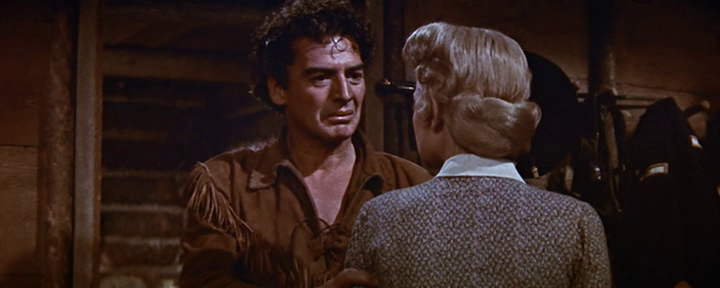
The film also carries on what was then seen as something fresh and new: treating Native Americans as more than just forces of nature, stock villains or docile, complacently racist depictions. Inaugurated by Delmer Daves’ James Stewart-starring “Broken Arrow” (1951), this new direction of portraying America’s original inhabitants closer to real human beings (or Hollywood human beings at any rate), surely influenced Mann and Yordan. Mann had not dealt with ’Injuns since “Winchester ’73” (1950), ironically featuring Rock Hudson as an Indian, and “The Last Frontier” is thankfully progressive in its handling of its Native American characters. Jed Cooper (Victor Mature), our protagonist, respects them and treads lightly over their land and is rendered exasperated by the deluded Colonel Marston’s (Robert Preston) assertion that they represent no threat as they are simply not intelligent enough to understand military strategy.
The cast though, is perhaps the chief reason in the film’s overall relegation to semi-obscurity. If James Stewart had starred, the status of classic would undoubtedly have been bestowed on it; but Victor Mature is the lead. Forever remembered due to Groucho Marx’s acerbic quip upon seeing Mature in Cecil B. DeMille’s “Samson and Delilah” (1948), “First picture I’ve seen in which the male lead had bigger tits than the female”, Mature in a few roles actually proved his worth as an actor, such as “Doc” Holiday in John Ford’s “My Darling Clementine” (1947) and in the Film Noir “Kiss of Death” (also 1947), directed by Henry Hathaway. His performance in “The Last Frontier” is his best, but even so, he does occasionally lapse into overacting, especially when playing drunk. Ideally, his adventure-seeking character would’ve been played by Kirk Douglas in “The Big Sky” (1952) mode or Burt Lancaster, against say James Stewart as Colonel Frank Marston in complete neurotic fervour. As it is, the film starts not having realised its full potential.
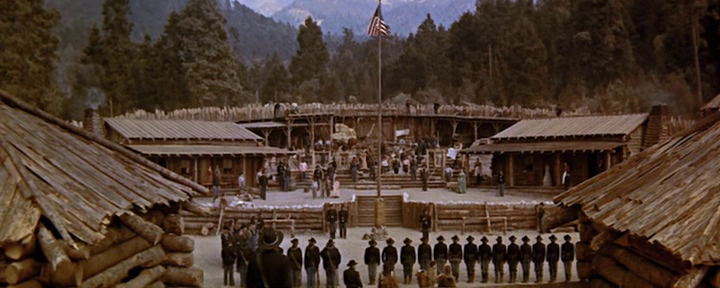
Yet Robert Preston as Marston is very good, benefiting from having the best written character in the movie. He’s wonderfully vainglorious figure made strangely understandable and relatable, partly due to Preston refusing to add any tics or mannerisms to the performance. The revelation that he lost 1500 men in the Civil War against the Confederates at Shiloh, which has earned him the nickname “The Butcher”, serves to deepen him, to give his desperate search for vindication (he claims he would repeat his actions at Shiloh if necessary) and glory a classical tragedy and gravitas.
Ann Bancroft, Mrs. Robertson herself, plays Corinna Marston, the vulnerable wife of the Colonel. Mann’s cinema never concentrated on women, so Bancroft has to work with anything she can, which is not a lot, leading to stiffness to her affair with Jed, failing to show how she could light such a passion in him. Yet sometimes her character comes together and works. After an illicit meeting with Jed, the pair walk out together guilty towards the accusing, reproachful stare of Jed’s father-figure of Gus (James Whitmore). The camera tracks and pans in one shot, dollying to keep Corinna in the centre, leaving the other two figures behind; the focus on her externalises her feelings of guilt and isolation, as if every eye in the camp were following her, judging her, the camera becoming the prying, voyeuristic prism though which men see her.
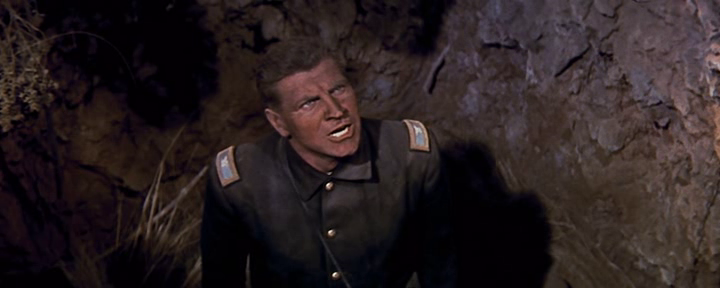
The supporting cast is mixed: James Whitmore is good, if restricted by the script, his character Gus operating as a symbol of Jed’s heritage and the way of his life he is forsaking. On the other hand, the Indian Mungo, played by Pat Hogan, is the least developed of the initial trio and is played very much as a noble savage; progressive ideals could be carried only so far in a fifties Hollywood Western.
Guy Madison as Captain Riordan is an interesting character. In charge of Fort Shallan at the beginning of the film, he welcomes Jed Cooper and encourages his attempts to fit into the army. The pair’s discussions too, on what civilisation is, are intriguing and provide a thematic basis for the film. With the coming of Col. Marston though, taking command, Riordan is relegated to the background, his character’s growth prematurely stunted. Towards the end of the picture he re-emerges, but it’s too late. It is a sign of surprisingly poor script construction and one can only speculate whether in earlier drafts he had a larger, more fulfilling role; or perhaps he suffered from stringent editing. We may never know.
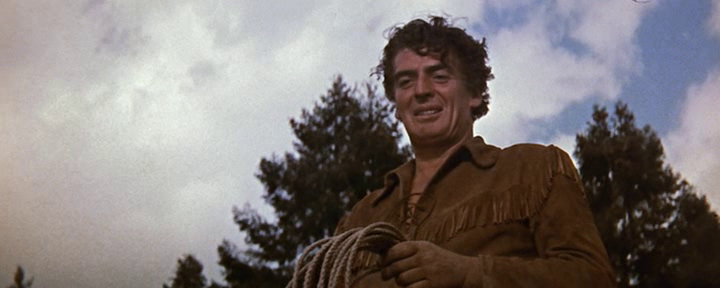
The cinematography by William C. Mellor is excellent, even though the plentiful night scenes are shot with darkened filters. The camera is constantly tracking and panning in classic Mann fashion, the wide frame perfectly capturing the landscape. Although set in Oregon, it was actually shot on location in Mexico near Mount Popocatépetl; this unusual and unfamiliar location gives the film a fresh, vibrant look.
However, the entire process of shooting in colour, in cinemascope, is symptomatic of the state of American cinema in the late fifties. The only major star in the cast is Victor Mature; probably a mere five years previously he would not have warranted expensive location work or filming in widescreen. Yet the inexorable fall in cinema audience figures in the United States since 1945 had increased even more with the rise of television from 1950. Hollywood’s always afraid, but in 1955 they were petrified. 3D was for the first and not for the last time either, seen as a potential saviour, but within a year of “The Last Frontier”, it was dead. Actors and agents had rose in power, the major studios laid off many studio contracted technicians, smaller independent production companies had started to come to the fore. Film was changing, modern cinema was only five years away from being born with the combined shock of the Nouvelle Vague and “Psycho” (1960), and the only way Columbia would fund a middle-of-the-road Western was if it had all the ingredients of a hit: colour, widescreen, exotic locations, action, romance and so on.
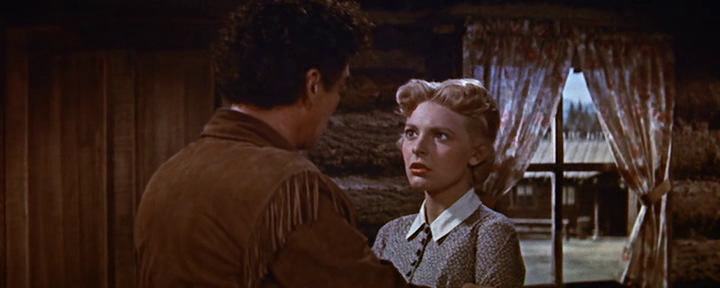
Anthony Mann does all this and more, his directorial technique as refined, violent and immaculate as ever. This was his first and only Cavalry Western, so it’s not surprising that the film is indebted to John Ford’s “Fort Apache” (1948), the keystone of the genre. What is surprising perhaps is the private in-joke reference to Mann’s earlier film, “The Man from Laramie” (1955), with the army command at Fort Shallan obliquely mentioning another military outpost at “Laramie”.
Crucially though, is Mann’s introduction of the Death of the West as a major theme, even if it could be argued that his “The Far Country” (1954), did as well to a certain extent. Yet it can never be truly said to be a theme in focus: it is set in the 1860s, during the American Civil War, more properly seen as the Birth of the West, rather than the end. Mann though, at times can be remarkably explicit about it. Gus, in this respect, is his mouthpiece, saying:
“Civilization is creepin’ up on us lads. The Blue Coats aren’t satisfied with gobblin’ up all the lands east of the ’Sippi. No, they won’t stop till they’ve pushed us over the Rockies and into the Pacific Ocean. It’s a drownin’ fate that awaits us all. These are calamitous times, Jed, calamitous times.”
Mann is making a pessimistic point here, and despite the film’s ultimately happy, conformist ending, it is dubious of the real merits of civilisation and society. He wasn’t alone either, in the Eisenhower era, of scrutinising and penetrating beneath the façade of what everyone supposedly wanted and strived for; Mann had become an unlikely comrade-in-arms in this respect with the directors as diverse as Douglas Sirk and Alfred Hitchcock. It’s hardly surprising either, that Mann makes a film that in other hands could be superficial and routine, instead weighing the film heavily in symbolism. American expansionism increased in the fifties with a battle of ideologies and influence against the Soviet Union. It’s hard to interpret Gus’ comment about the “Blue Coats” pushing them ever further West as anything but a comment on U.S. Cold War foreign policy. Fort Shallan in this light becomes a symbol of the United States, an America though that has become a pale shadow of a more sophisticated Europe in its aping of its materialistic, aristocratic culture. The true, real Americans, as Mann views it, are Jed Cooper and Gus, and progressively, Mungo and the Native Americans. They’re being rejected (neither Gus nor Mungo are accepted at Forst Shallan) or being eventually, blithely, assimilated like Jed. The ending from this perspective is almost tragic. Of course this reading of the film runs to counter to how we really see the ending: the excellent score by Leigh Harline is upbeat and sweeping, Victor Mature and Guy Madison are smiling and evidently happy, and the falling snow is fairly-tale like. Mann can’t see through to the final bitter end his own implications. This is after all, a mainstream, commercial Western not a European arthouse film, independent from a studio system. Mann instead was forced to work from within.
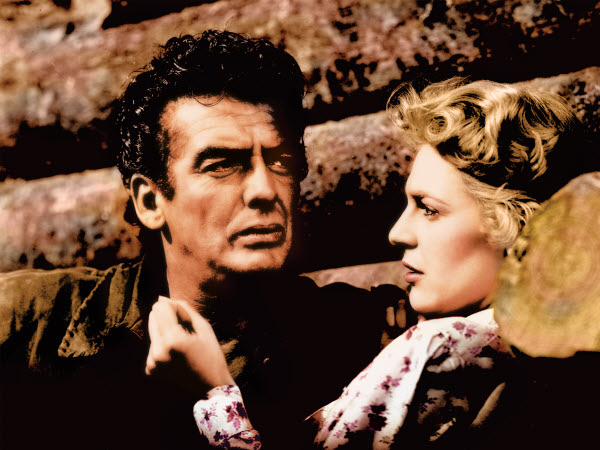
Mann stages the true climax with Robert Preston’s Col. Marston’s disastrous attack on the Indians with aplomb. Marston dies ingloriously, amid the chaos and carnage of battle. We, the audience, perhaps feel some sympathy for him; in part due to Preston’s playing and Mann’s refusal to out-right condemn him. Instead, he criticises the views rather than the man, viewing him as flawed and psychologically damaged.
Interestingly, Col. Marston dislikes Jed openly on terms of class, an Old World attitude that should be out of place in the New World, but isn’t. This class system contributes to Gus’ hostility towards society. He says that Corinna Marston is a “fancy lady who needs a fancy gent”. His dismissive attitude is unmistakable and his disgust is hardly misplaced in the context of the scene. However, Jed is keen for acceptance, partly to further his romance with Corinna. The tunic of the U.S. army becomes a powerful symbol of his desire to fit in. When he gets drunk on the eve of the Indian attack and behaves ridiculously in front of the lines of parading troops, it is a final gesture of defiance, accumulating in his throwing away his tunic and walking off into the wild. Yet once he rejoins Mungo, he’s turned away and told he now belongs to civilisation. Mungo is right: Jed’s drunkenness was one last act of irresponsibility before he enters society. The handling though, leaves the viewer finally ambivalent as to whether or not this is a positive move for Jed.
What is “The Last Frontier”? It’s hard to know, and I’m not sure Mann knew either. It pulls in so many different, divergent directions that they dilute the overall impact: Cavalry Western, frontier adventure, a deeper commentary on the merits and vices of civilisation. Philip Yordan’s script is partly to blame; it creates an unresolved dramatic tension in blending so many disparate elements that leads the film to feel curiously unsatisfactory. The acting is startlingly fine, but it suffers under the burden of the audience’s knowledge that it could be so much better cast. If it continues to fascinate, then it is through what it manages just as much as it’s failed potential. Mann is always worthwhile, and a good, flawed film such as The Last Frontier proves this as well as “The Naked Spur” (1953).
Buy now: From Amazon.com (Germany import) | From Amazon.ca | From Amazon.co.uk | From Amazon.de



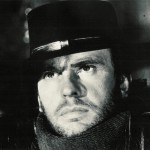
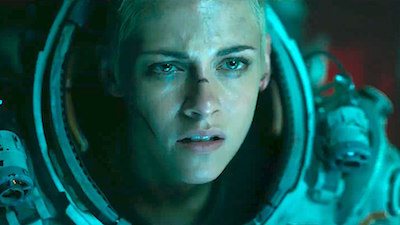
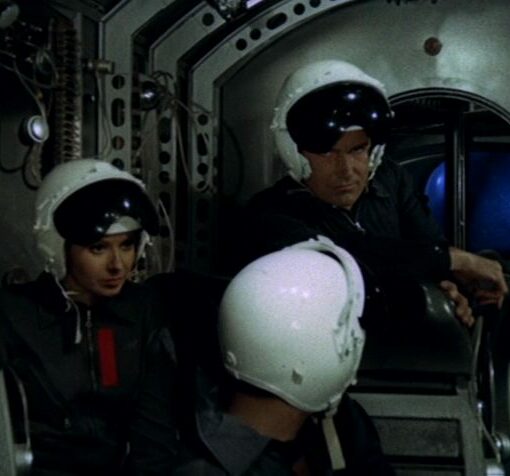
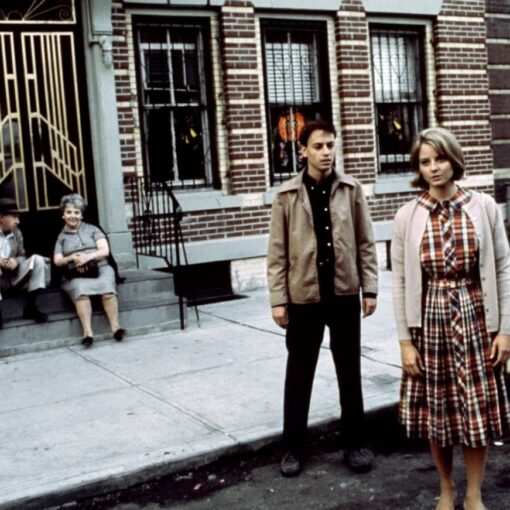

One thought on “The Last Frontier | 50 Furious Westerns”
I read somewhere that Phil Yordan wasnt the true writer of a number of american classic movies as he claimed he was but he was the head, the manager, of a group of blacklisted screenwriters that couldnt have find work otherwise; it leaves a somewhat bad feeling.
Mann felt, to be back to the subject of the movie, that Last frontier was too confused, flawed, missed it’s target, but i love it myself a lot.
i admire your text, it finds and brings to light the truth of the movie, it’s inner movement, with a great style.